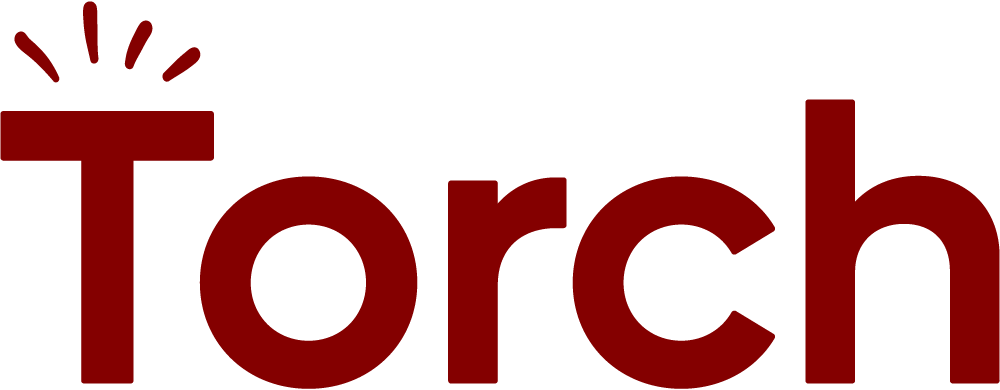When we talk about the value of coaching at Torch, we often come back to the power of relationships. Last month I felt the power of relationships not from coaching but from a lively roundtable discussion co-hosted with Torch customer Bindu Garapaty, VP of Talent at Impossible Foods. The session focused on the research we recently sponsored with Harvard Business Review Analytic Services, and led to a broader discussion among the Torch customers present on the challenges and successes in delivering coaching programs. While company sizes ranged from startups to global enterprises, and represented a variety of industries from retail to financial services to manufacturing, a few common themes emerged.
What makes coaching programs powerful?
After our head of behavioral science insights Elizabeth Weingarten reviewed the research findings (the highlights of which are available in our executive summary ) Bindu set the tone for the conversation. “Leadership is foundational to moving teams to deliver,” she said, recounting her own experience. “And the power of interpersonal relationships is what deepens insights and creates behavior change.” This includes relationships like the one between a coach and a coachee, which several participants described as being key drivers of behavior change for their leaders.
What makes coaching relationships such a powerful lever for behavior change? One participant pointed out that the nature of coaching being sustained over time, versus a point-in-time training, was a key element in coaching’s impact. Participants also described another dimension that makes coaching work; that it’s unique for each employee, and tailored to what will help them grow. Their perspectives are backed up by the HBR research, which shows that 86% of HR leaders feel more personalized development is essential in today’s work environment.
Others noted the importance of a safe place where leaders can gain a different, ‘outside-in’ perspective as a key element of coaching.
Demonstrating the ROI of coaching and gaining buy–in for investment
While all participants championed the benefits of coaching, the conversation also touched on the challenges of demonstrating return on investment for coaching–particularly given its longer-term nature. Organizational leaders are more likely to invest in development programs that show ROI, which means it’s critical that leaders measure quantifiable metrics, like learning goals.
For some in the group, measuring ROI is still a work in progress. “I love the idea of tailoring our programs to our values and goals, that would really help us gain buy-in for growing our coaching program,” said one participant. Others are doing measurement, but aren’t directly linking it to coaching yet: “I can see we’re moving the dial on career development in our pulse survey, but I do need to show ROI better by linking it more directly to the program.”
One participant shared that her organization measures ROI for coaching via growth and development metrics. While coaching is not the only contributor to growth and development at her organization, making it a less direct metric, they can see that coaching makes a difference to employee development.
Many in the group demonstrate their business impact by tailoring the coaching program to their organization’s leadership values and framework, either using Torch’s leadership competencies or by aligning to their own internal framework. One new customer taking this approach commented, “Learning goals will hopefully be consistent, and show that participants, with their coaches, are bridging gaps they might have from their skillset to the overall leadership framework we use.”
Advocates for tailored 360s that match performance and feedback systems said they are able to demonstrate through the 360 process and associated learning goals that coaching is aligned to development needs. This, they said, leads to trust in the development process, as well as improvement in engagement and performance . By making learning and development programs accountable to business outcomes, such as retention, growth, performance, and employee satisfaction, HR can show the links and better secure buy-in for an investment in coaching.
Maintaining leadership coaching in an economic downturn
“We’re facing some headwinds in our industry,” said one participant. Her constrained budget has made her start thinking about how she could scale the impact of coaching to more participants. How can she reach the largest number of employees with the benefits of coaching? Participants chimed in to share what has worked for them, citing ideas like starting coaching circles and mentoring programs.
Beyond the programs themselves, the group also shared ideas on communicating proactively versus reactively with participants and the larger organization as an effective way to gain buy-in. By focusing on communicating about the value of coaching, the story is about outcomes that align with the challenges and goals of a particular department or segment of the business. They also shared success engaging their audiences by encouraging coachees to share their experiences and the value it brought them within their team.
Alignment of coaching programs to organizational goals
One of the key findings from the HBR research was the importance of aligning the goals of a leadership development program to organizational objectives. While most of our group is already aligning their coaching program to the organization’s strategy and goals, there was acknowledgement of the complexity that lurks beneath this seemingly straightforward tenet. “In particular for larger companies, which might have many subcultures, there is a lot to take into account when customizing to the organizational need,” said Bindu.
Her approach for identifying and addressing those different needs? “Let’s pilot! Try it out in small groups, taking feedback and listening to needs of business – Which groups are hungrier to experiment and push boundaries? How do we customize?” Find a little budget to start coaching for that group and show impact, she advised. “Listen to your customer: what are the employee needs you’re trying to meet – as opposed to ‘we have this amazing program we want to roll out from L+D’’.’
We’re grateful to Bindu and the other HR leaders who took the time to share their challenges and successes with our group, and inspired this post.

